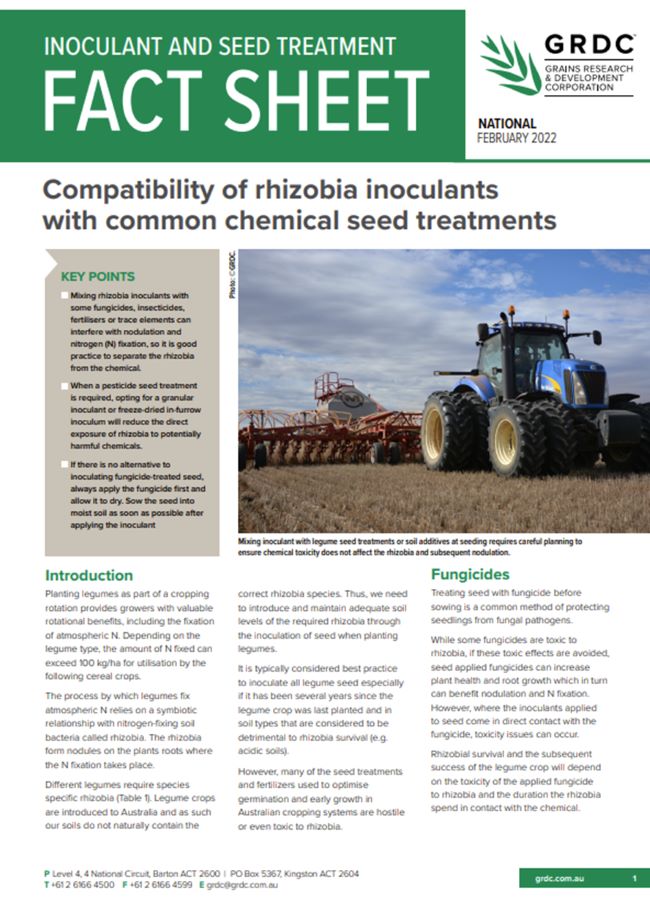Inoculant and seed treatment fact sheet
Inoculant and seed treatment fact sheet
Published: 09 Feb 2022
Planting legumes as part of a cropping rotation provides growers with valuable rotational benefits, including the fixation of atmospheric N. Depending on the legume type, the amount of N fixed can exceed 100 kg/ha for utilisation by the following cereal crops.
The process by which legumes fix atmospheric N relies on a symbiotic relationship with nitrogen-fixing soil bacteria called rhizobia. The rhizobia form nodules on the plants roots where the N fixation takes place.
Key points
- Mixing rhizobia inoculants with some fungicides, insecticides, fertilisers or trace elements can interfere with nodulation and nitrogen (N) fixation, so it is good practice to separate the rhizobia from the chemical.
- When a pesticide seed treatment is required, opting for a granular inoculant or freeze-dried in-furrow inoculum will reduce the direct exposure of rhizobia to potentially harmful chemicals.
- If there is no alternative to inoculating fungicide-treated seed, always apply the fungicide first and allow it to dry. Sow the seed into moist soil as soon as possible after applying the inoculant
Download PDF
Region: National
GRDC Project Code: MSF1806-002SAX,

